If you were to eavesdrop on a medical/nursing school interview, you would definitely hear the question “Why do you want to be a doctor/nurse?”
Common answers would include:
- I want to help heal other people.
- I want to care for people when they are ill.
- I’m interested in furthering scientific research to cure ailments.
- I’ve been interested in science and medicine since I was a kid and I know this is my life calling.
Do you know what you wouldn’t hear? I am interested in keeping track of and sorting out medical billing.
While no medical practitioner is passionate about paperwork, it’s an integral part of the job. Thankfully, with advancements in technology, medical professionals don’t have to spend hours knee deep in paper work.
Healthcare providers implement medical software development solutions to change the way they interact with the patients and automate the processes without being affected in any way by the human mistake. Nowadays, you can find various healthcare CRM solutions that can improve and modernize the workflow.
When doctors invest in medical billing software, all the hard work is automated. Then, doctors can get back to doing what they love—helping people.
If you’re a practitioner on the prowl for a medical billing software, this article is for you.
You’ll learn what a software for medical billing is and what it should do and get a quick review of some of the top medical billing software on the market.
What is medical billing software and what should it do?
Before reviewing the top medical billing software programs, let’s talk about what it is and how it should serve you.
In short, medical billing software is a computer application that automates the healthcare billing process. Let’s talk a closer look into what a medical billing software should do for you.
Medical billing software should include patient pre-registration.
The first step in making sure you getting billing right is registering all of your patients.
It’s easy to get distracted by administrative tasks and data collection, especially if you have to go back after the fact and import new patient data. Managing new patient intake from the same interface as insurance eligibility and medical benefit checks simplifies the process.
Medical billing software will help you with claims management.
Medical claims management includes all the paperwork involved in patient diagnosis, treatments, and medications.
Since there are so many different patients with different insurance companies, it can be difficult to manage claims. That is, it’s difficult if you don’t have a software to do it for you.
Medical billing software will help keep your office, insurance companies, and patients on the same page when it comes to claim tracking.
Medical billing software offers accounting and financial management.
What’s another big piece of the healthcare paperwork puzzle? That’s right, accounting and finances.
A good medical billing software will help you with payroll, timesheets, accounts payable and receivable, outstanding payments, online bill pay, and more.
There is, however, a case to be made for separating how you track employee time and payroll and how you manage patient accounting. If you want to keep these tasks separate, look into a time tracking and payroll app like Time Doctor.
Medical billing software organizes billing and collection.
Medical billing software helps process electronic and hard-copy data, so you know what patients owe and what costs insurance companies will cover.
In other words, medical billing software will handle proper coding, processing, updates, and expenses.
Additionally, medical billing software will follow up with patients to remind them to pay, and manage collection and denial management as needed.

Medical billing software stores patient information.
A medical billing software won’t do you much good if it doesn’t store all your patient information in one centralized location. With the help of a medical billing software, you can manage patients’ medical records, medications, and more.
Scheduling should be part of your medical billing software.
Understanding when patients come in for treatment, what type of appointments they have, and when they need to come back again is an integral part of medical billing.
The best way to automate the process and make sure you get things right is to keep scheduling and billing in the same easy-to-access interface.
Medical billing software helps with compliance.
The last thing you want is to run into a lawsuit because you aren’t up-to-date on recent medical laws.
A medical billing software help you rest assured your data is stored safely and in line with HIPAA compliance standards.
Medical billing software should include reporting and business intelligence.
Need access to reporting including financial reports, patient history, practice reports, and more?
A good medical billing software will provide you with basic medical reporting as well as the ability to create custom reports.
These are just some of the top features you should look for in a medical billing software. Now that you have a good idea of what medical billing software is and what features it should include, let’s review some of the top options to help you make your choice.
What are the best medical billing software programs?
Here is a list of the top medical billing software programs including what they do, how much they cost, and the pros and cons of each.
1. AdvancedMD
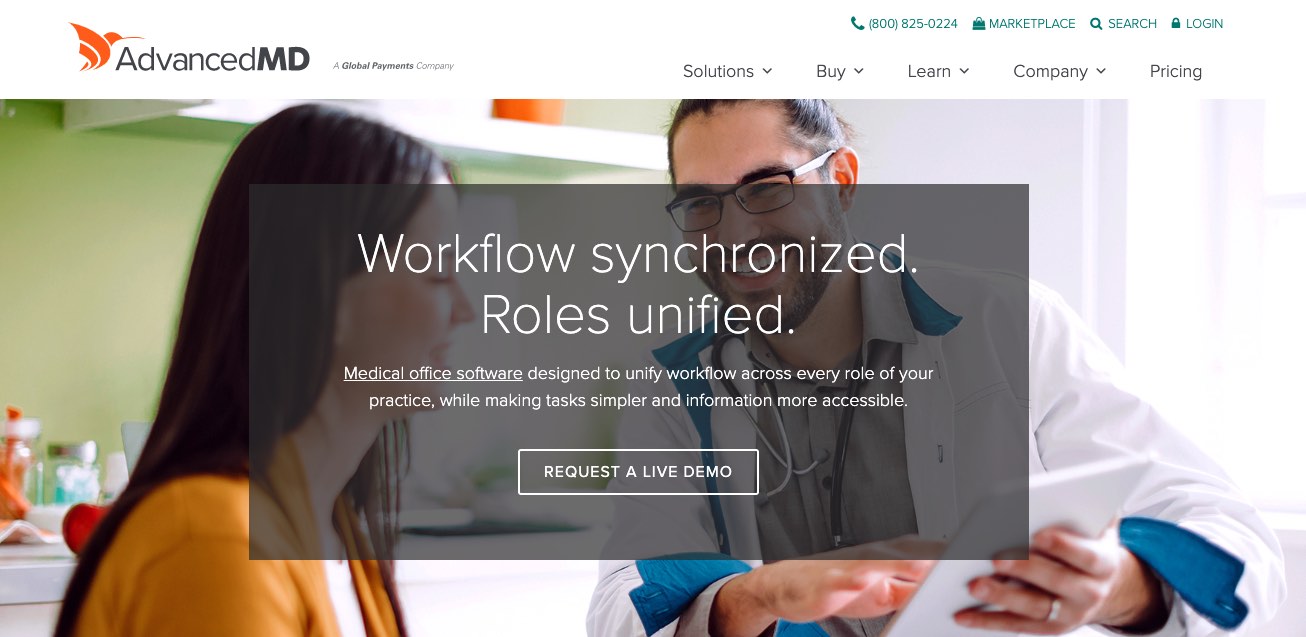
AdvancedMD is one of the top places to look for medical billing software. They also offer scheduling & financial reporting software that makes managing your practice easier than ever.
PROS
- AdvancedMD provides a complete suite of solutions. You can manage most everything from one tool.
- They have a smart dashboard that shows workflow, alerts, and priorities.
- They offer Advance Telemedicine.
- Client referral bonuses are included in the software.
- Patient reminders are built into the software as a great benefit.
- They have an online scheduling solution that is great.
- And more!
CONS
- This software is on the expensive side of things, so it might not be affordable for smaller practices.
- They have a lot of add-on features that require additional payment.
- Conferences and trainings may involve travel and may be expensive.
PRICING
The pricing of AdvanceMD depends on what you need and how you package your bundle. The best way to determine price is to get a demo of the service and ask a sales representative.
2. CureMD EMR
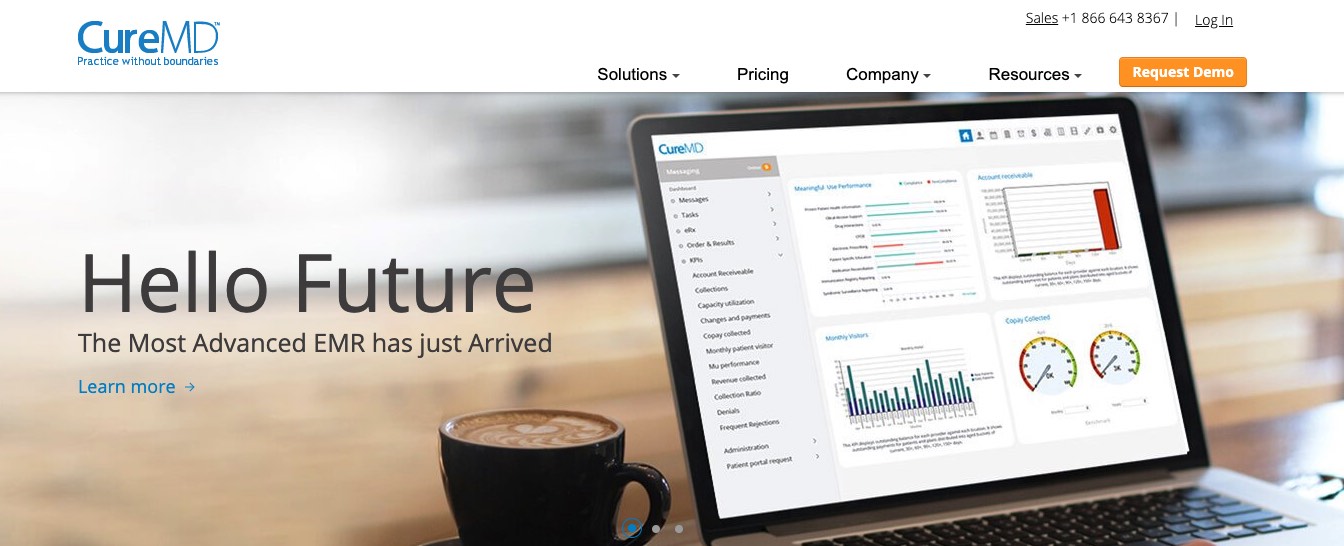
CureMD EMR is an electronic medical record system that helps practitioners manage billing, charting, scheduling, claims, and more.
PROS
- The CureMD EMR system software offers mobile functionality, which is a cool added feature. It helps healthcare offices present and capture information more effectively.
- The reporting and productivity tools in this software are robust, and give you insight into Accountable Care Organization best practices.
- The interface is intuitive and easy to learn making clinical day-to-day operations easier.
- Other cool features include: appointment booking tools, test reminder features, electronic faxing and insurance validation resources, and more.
- Works through the cloud, so you don’t have to worry about installation.
- There are over 123,000+ users.
- Training, hosting, upgrades, support, and maintenance are all free.
CONS
- It only works with the Internet Explorer browser.
- They charge a flat fee every month, which can be a drawback to some users.
- The support is outsourced, so it may be difficult to find immediate help when you want it.
PRICING
The pricing varies depending on what you want and how your office is set up. The best way to learn about pricing is to get a quote from a sales representative and/or to have a demo.
3. EpicCare EMR
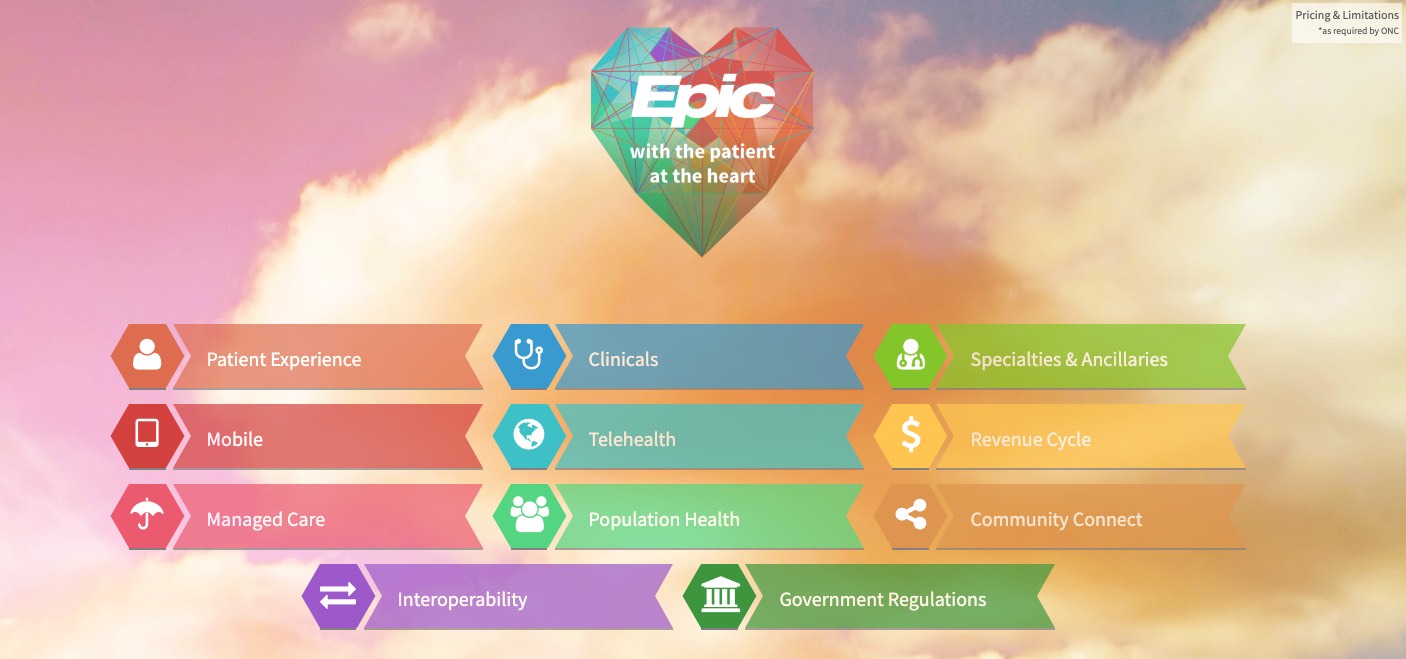
EpicCare EMR is another medical billing software that has a reputation for being fast and user-friendly.
PROS
- It’s easy to install because it has a pre-built model that configures easily.
- Patients have access to online results and health reminders. There are also self-service refills, bill pay, and scheduling. This saves providers time.
- This software is mobile-friendly.
- It has compliance tracking aspect that is helpful.
- It is easy to use and intuitive, especially in comparison to some of the other software programs that are available.
- It allows for safe medication administration as it links the drug information.
CONS
- It’s expensive.
- Charting and flowsheets can be redundant.
- Customer support is sometimes not receptive to requested user-friendly changes.
- The health maintenance options could be better.
PRICING
For more information on pricing, it’s best to get in touch with a representative from Epic.
4. DrChrono EHR
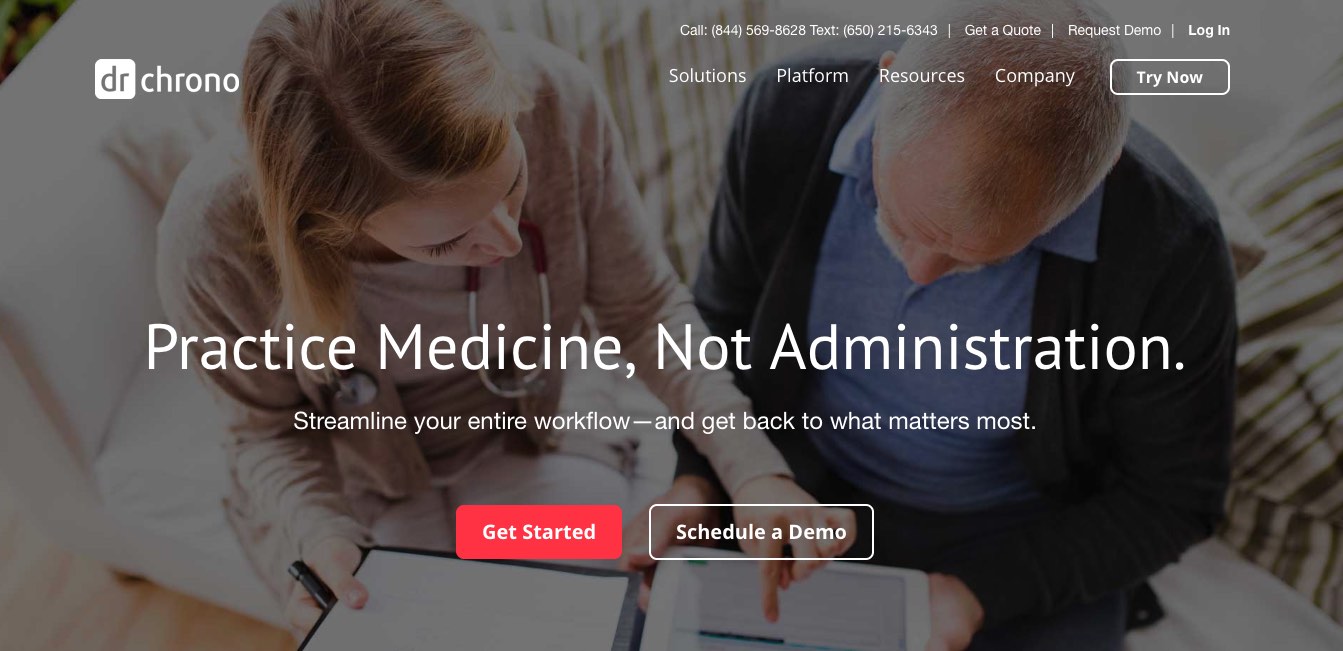
DrChrono is another software system that all medical practices can use. You may find large hospitals using this software as well as smaller clinics.
PROS
- The system has configurable medical forms.
- You can also schedule appointments from the tool
- You have access to over 40,000 labs.
- E-prescribing is possible.
- The tools help you save time and increase operational efficiencies. Get back to doing what you love with this efficient tool.
- Patient check-in is simple, and the software will synchronize the data.
- The tool is flexible so you can tailor it to any organization.
- Integrates easily with labs.
- The system is fully HIPAA certified, so you don’t have to worry about any compliance issues when you are using this software.
- Ability to streamline your workflow.
- You can use it across devices.
CONS
- It’s difficult to get ahold of customer support.
- Some users have complained about set-up.
PRICING
Pricing varies depending on how you use the software. The best way to find out how much it costs is to schedule a demo.
5. Waystar
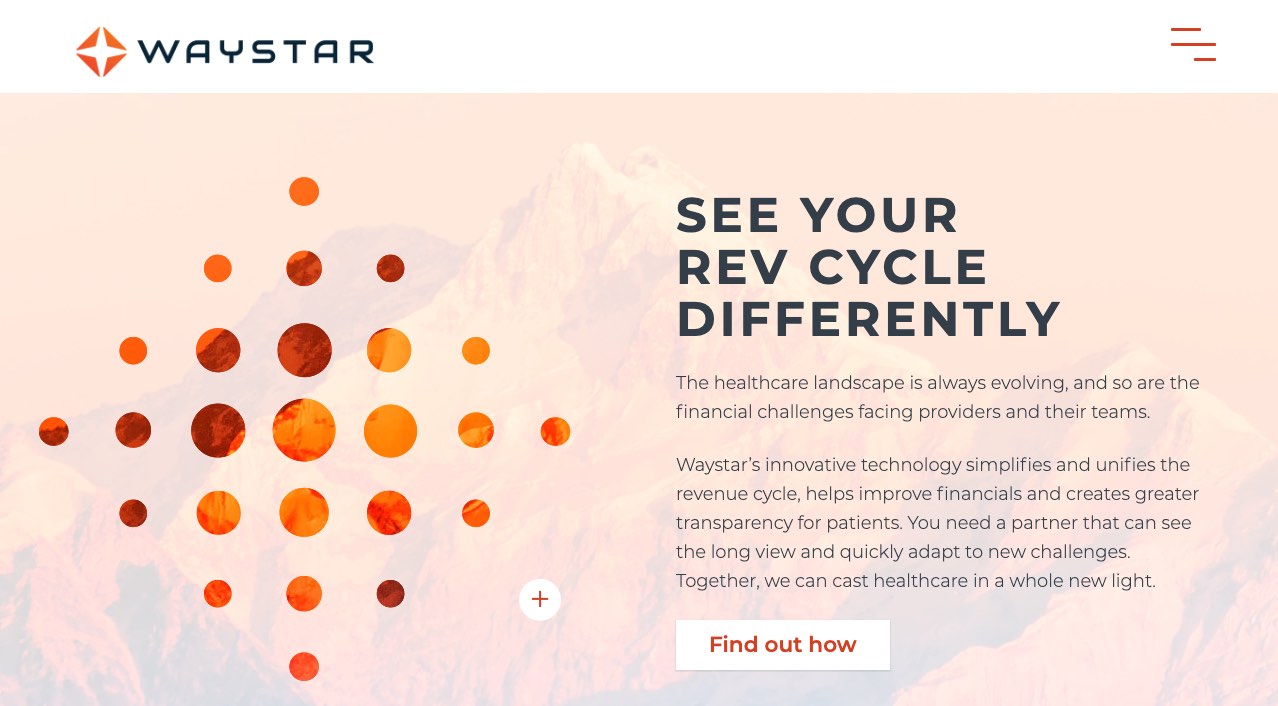
Waystar is a cloud-based solution that helps health organizations manage their revenue cycle. You can easily track revenue from patients from the first time they see you until they pay their final balance. This software is useful for health facilities, no matter the size or speciality.
PROS
- One of the coolest things about this software is how it makes payment easy for patients. Patients have a variety of different payment options.
- This software integrates with many other top medical systems.
- You can select the features you want depending on what you need.
- The system is easy to navigate.
- The system is set to scale, so it can grow with you as your clinic grows.
- It’s easy to set-up.
- They have live training on the Waystar website.
- The solution helps you identify under-coded or incorrect claims to save you time and money.
- It’s easy to manage claims and automatically uncovers missing deposits and ERAs.
- Tracks appeals and denials.
CONS
- This software is on the pricier side of things.
- This software is not great for small organizations. If you’re a medium or large clinic, then it might be a good fit.
PRICING
For more information about pricing, it’s best to check out the Waystar website and set up a demo. Your sales representative will offer you a quote.
6. PracticeSuite Medical Billing
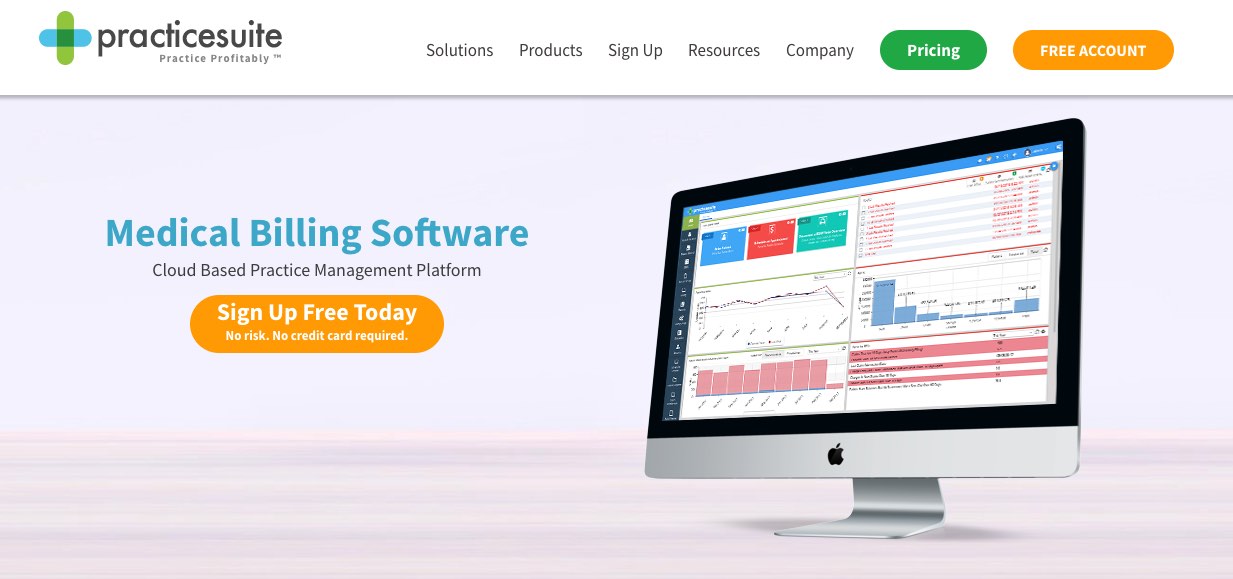
PracticeSuite Medical Billing software is another great option for a medical billing software. They help you manage revenue, appointment scheduling, patient self pay, and other easier aspects of the business. They also dive deep and help you with complicated processes including insurance billing and denial management, among other things.
PROS
- You can leverage advanced reporting to monitor and improve financial performance.
- The automated dashboard alerts help you with managing your finances well so you stop losing money.
- There are no setup fees or cancellation fees.
- The product is more affordable than some of the other medical billing software programs on the market.
- You can co-brand this solution with your company logo.
- All work rejections, denials, and post payments for all clients are on one dashboard.
CONS
- It can be difficult for some users to install.
- Sometimes the accounting can be off, but they make strides to make corrections.
PRICING
The billing for this service is one of the few that is actually listed on the website. They require you to pay a monthly payment. The payment varies from free to $195/month depending on which features you want to include.
7. Therabill
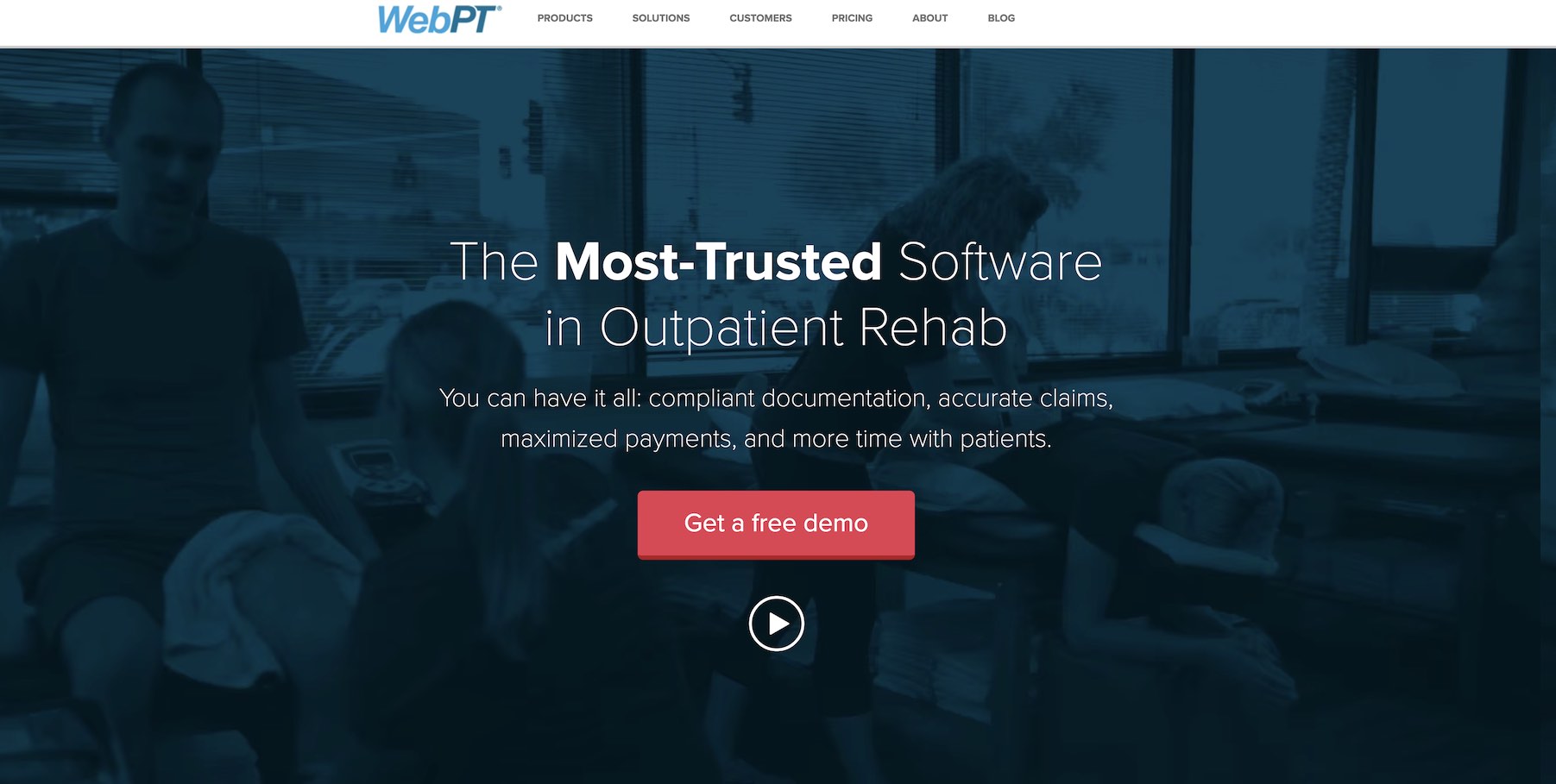
Therabill, WebPT’s web-based billing software, was made by rehab therapists, for rehab therapists to help them increase clinic efficiency—and profits—by maximizing A/R and reducing claim errors.
PROS
- All of your billing information automatically transfers from your documentation to your billing sheet—so you never have to worry about entering the wrong code or wasting time on double data-entry.
- WebPT offers HIPAA-compliant systems; real-time analytics; patient invoicing and billing; and secure patient portals.
- You can streamline billing efficiencies with simple and user-friendly billing interfaces, detailed activity logs, and one invoice from one company. Plus, users don’t need a clearinghouse account, because WebPT sends claims directly to the clearinghouse on your behalf.
- WebPT offers free, personalized training and unlimited, highly-trained, US-based phone support. You also get full access to all video and written tutorials.
- WebPT submits claims electronically, so providers receive reimbursements quicker—and save time and money by not having to send claims through the mail (for certain payers). WebPT also partners with multiple clearinghouses, and customers pay no additional clearinghouse fees.
CONS
- Therabill doesn’t handle institutional (Medicare Part A) claims.
- Therabill can’t bill multiple TINs. If a company has more than one TIN, a separate instance of Therabill must be set up for each.
- Therabill doesn’t allow license sharing (but part-time licenses are available).
- Users can’t choose per-claim pricing (although, for most practices, that shouldn’t be an issue).
- Enterprise organizations may need additional support beyond what Therabill can provide.
PRICING
$99 monthly per rendering provider (and the first month is free for current WebPT EMR Members).
8. GreenBills
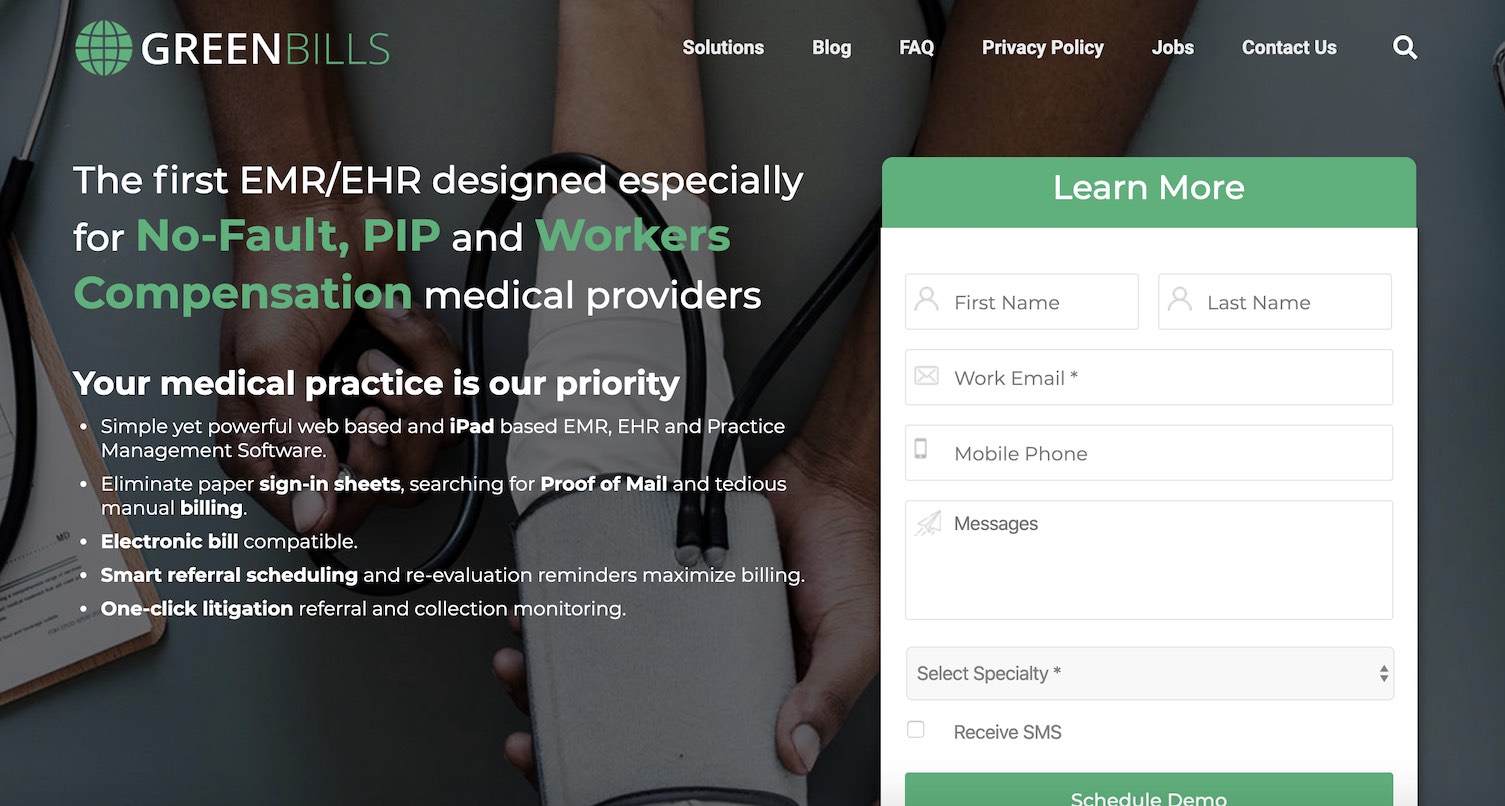
GreenBills EMR is one of the only medical billing software which specializes in No-Fault/PIP and Worker’s Compensation collection.
Pros
- GreenBills EMR allows for electronic billing of large No-Fault/PIP and Worker’s Compensation carriers.
- They integrate with collections attorneys allowing you to easily track your receivables.
- Includes all no-fault and workers compensation forms and workflows.
- Integrates with GreenBills Referral Network which allows to share patient records with their attorneys and other medical service providers.
Cons
- This software is not as robust for commercial billing compared to some competition.
- May not be suitable for large providers such as Hospitals.
9. MDBilling.com
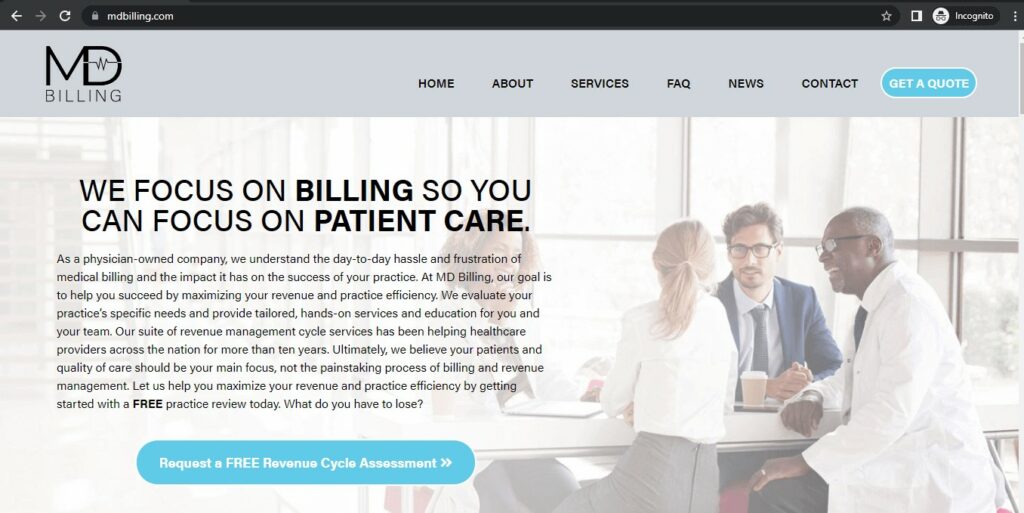
With over 6,000 physicians using MDBilling.com they are one of the largest medical billing software companies in Canada. They offer free technical support, a robust knowledge base and ad-hoc billing agent service if you need it.
PROS
- Uses an advanced rules-based system to prevent rejections and increase claim size
- Includes a synchronized web portal and mobile app so you can bill from anywhere
- Fully customizable to suit your billing process
- Detailed reports allow you to see when and where you make the most money
- You can bill under multiple specialties or sub-specialties
- Robust user management built for large or small practices
- Strong privacy & security features including 2-factor authentication
- And more!
CONS
- This software is not free.
- They have a lot of features that can require some know-how.
- At this time, only available in Ontario and British Columbia
PRICING
The pricing of MDBilling.com is based on how much you use it. You only pay when you get paid. The best way to see how easy medical billing can be is to try it for free or talk to them.
Wrap up
The medical world is complicated, especially when it comes to billing.
With different codes for different procedures and all the different types of insurance, it’s nearly impossible to keep track of billing alone. For this you need the help of a medical billing software.
But remember, each medical billing software has its own features and benefits. What you end up selecting will depend on the needs of your clinic, your budget, and how tech-savvy your staff is, to name a few factors.
Hopefully this guide provides you the information you need to find the right medical billing software for your clinic.


